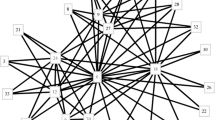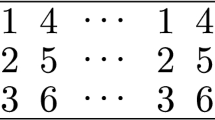Abstract
We consider the interval constrained coloring problem, which appears in the interpretation of experimental data in biochemistry. Monitoring hydrogen-deuterium exchange rates via mass spectroscopy experiments is a method used to obtain information about protein tertiary structure. The output of these experiments provides data about the exchange rate of residues in overlapping segments of the protein backbone. These segments must be re-assembled in order to obtain a global picture of the protein structure. The interval constrained coloring problem is the mathematical abstraction of this re-assembly process.
The objective of the interval constrained coloring problem is to assign a color (exchange rate) to a set of integers (protein residues) such that a set of constraints is satisfied. Each constraint is made up of a closed interval (protein segment) and requirements on the number of elements that belong to each color class (exchange rates observed in the experiments).
We show that the problem is NP-complete for arbitrary number of colors and we provide algorithms that given a feasible instance find a coloring that satisfies all the coloring requirements within ±1 of the prescribed value. In light of our first result, this is essentially the best one can hope for. Our approach is based on polyhedral theory and randomized rounding techniques. Furthermore, we consider a variant of the problem where we are asked to find a coloring satisfying as many fragments as possible. If we relax the coloring requirements by a small factor of (1+ε), we propose an algorithm that finds a coloring “satisfying” this maximum number of fragments and that runs in quasi-polynomial time if the number of colors is polylogarithmic.
Similar content being viewed by others
References
Althaus, E., Canzar, S., Emmett, M.R., Karrenbauer, A., Marshall, A.G., Meyer-Basese, A., Zhang, H.: Computing H/D-exchange speeds of single residues from data of peptic fragments. In: Proceedings of the 23rd Annual ACM Symposium on Applied Computing, pp. 1273–1277 (2008)
Komusiewicz, C., Niedermeier, R., Uhlmann, J.: Deconstructing intractability: a case study for interval constrained coloring. In: Proceedings of the 20th Annual Symposium on Combinatorial Pattern Matching, pp. 207–220 (2009)
Chang, J., Erlebach, T., Gailis, R., Khuller, S.: Broadcast scheduling: algorithms and complexity. In: Proceedings of the 19th Annual ACM-SIAM Symposium on Discrete Algorithms, pp. 473–482 (2008)
Gandhi, R., Khuller, S., Parthasarathy, S., Srinivasan, A.: Dependent rounding and its applications to approximation algorithms. J. ACM 53(3), 324–360 (2006)
Schrijver, A.: Combinatorial Optimization—Polyhedra and Efficiency. Algorithms and Combinatorics, vol. 24. Springer, Berlin (2003)
Uno, T.: A fast algorithm for enumerating bipartite perfect matchings. In: Proceedings of the 12th International Conference Algorithms and Computation, pp. 367–379 (2001)
Elbassioni, K.M., Sitters, R., Zhang, Y.: A quasi-PTAS for profit-maximizing pricing on line graphs. In: Proceedings of the 15th Annual European Symposium on Algorithms, pp. 451–462 (2007)
Canzar, S.: Lagrangian relaxation—solving NP-hard problems in computational biology via combinatorial optimization. PhD thesis, Universität des Saarlandes (2008)
Garey, M.R., Johnson, D.S.: Computers and Intractability, a Guide to the Theory of NP-Completeness. Freeman, New York (1979)
Author information
Authors and Affiliations
Corresponding author
Additional information
An extended abstract appeared in the proceedings of the 11th Scandinavian Workshop on Algorithm Theory, SWAT 2008, held in Gothenburg, Sweden in July 2008.
A. Karrenbauer is supported by the Deutsche Forschungsgemeinschaft (DFG) within Priority Programme 1307 “Algorithm Engineering”.
J. Mestre research supported by an Alexander von Humboldt fellowship.
Rights and permissions
About this article
Cite this article
Althaus, E., Canzar, S., Elbassioni, K. et al. Approximation Algorithms for the Interval Constrained Coloring Problem. Algorithmica 61, 342–361 (2011). https://doi.org/10.1007/s00453-010-9406-0
Received:
Accepted:
Published:
Issue Date:
DOI: https://doi.org/10.1007/s00453-010-9406-0




